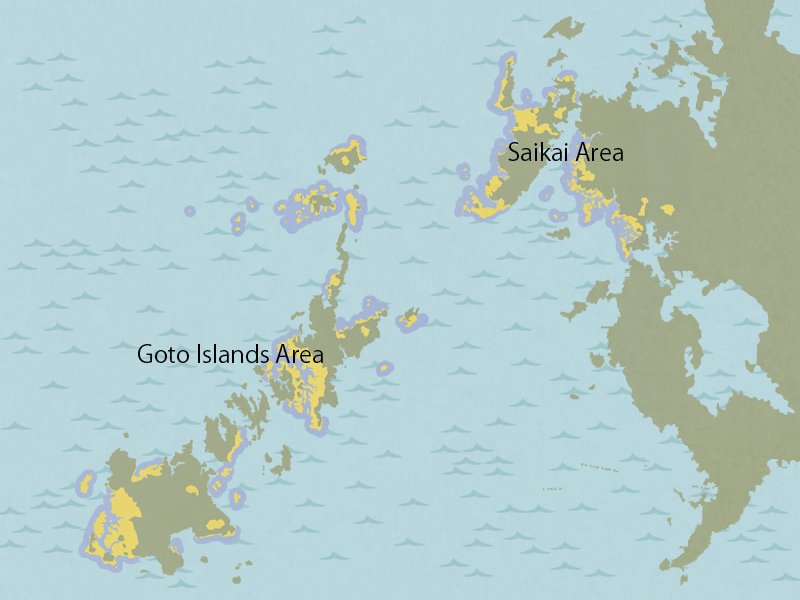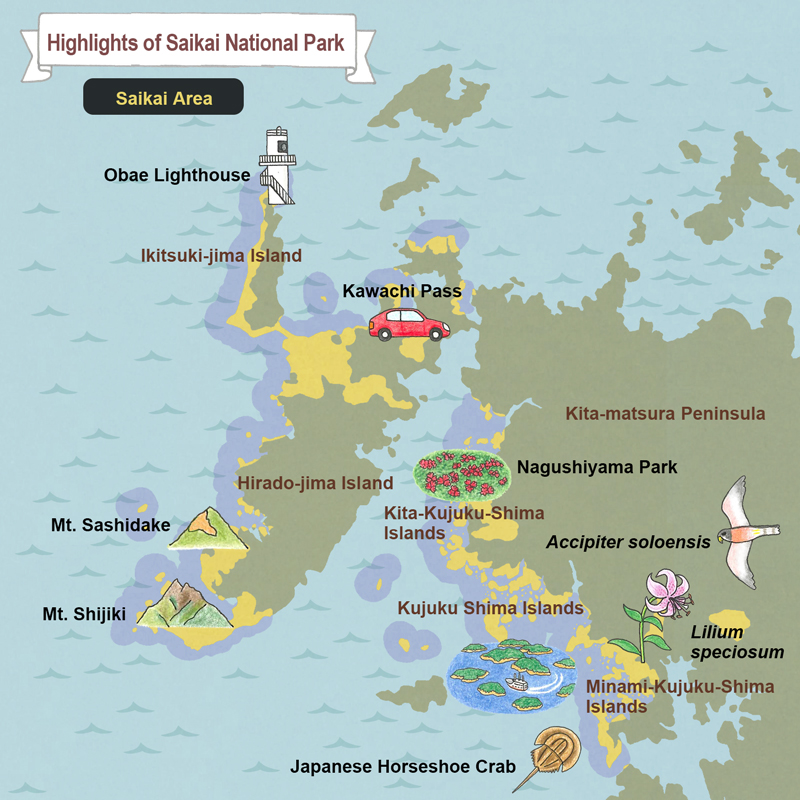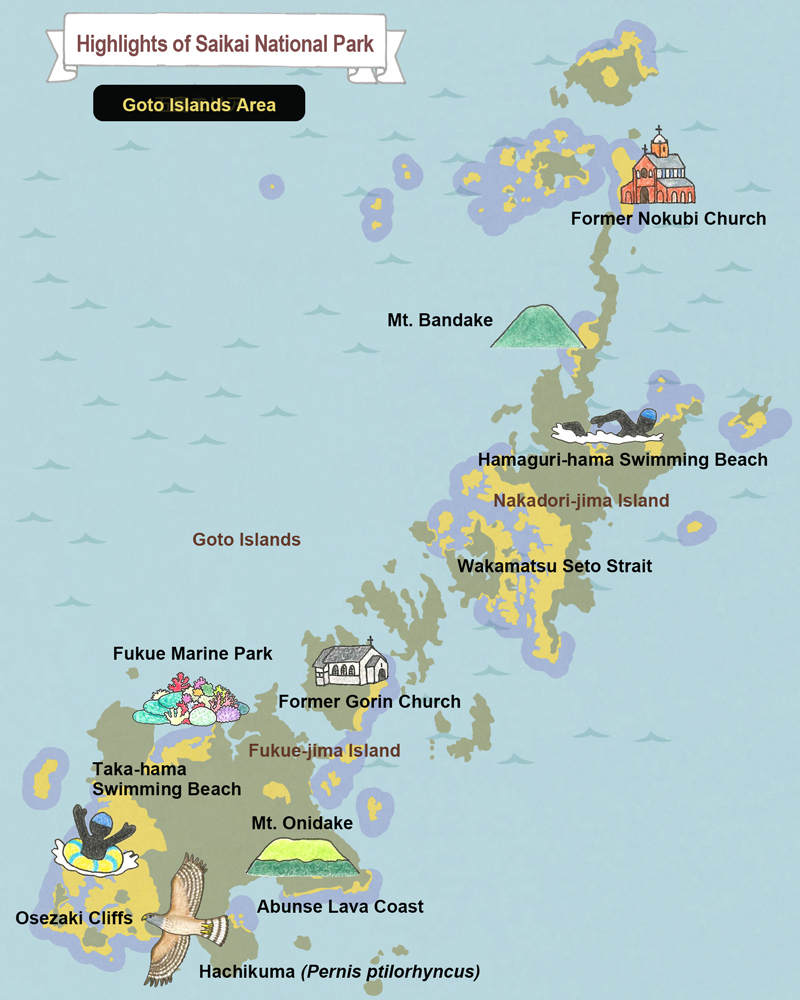- MOE
- National Parks of Japan
- Saikai National Park
- Guide of Highlights
main body
Highlights of Saikai National Park
Saikai Area
Mt. Shijiki
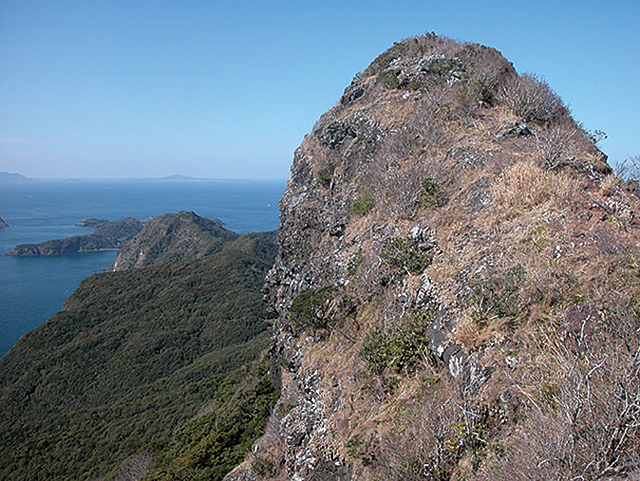
Mt. Shijiki
Marked by the distinct appearance of the lava dome lined with sharply jutted andesitic agglomerates, the vicinity of the summit is abundantly inhabited by the Carpinus turczaninovii hance and other plants native to the area of jutting rocks, as well as the Quercus dentate, a relict species from the ice age, at the base.
Mt. Sashidake
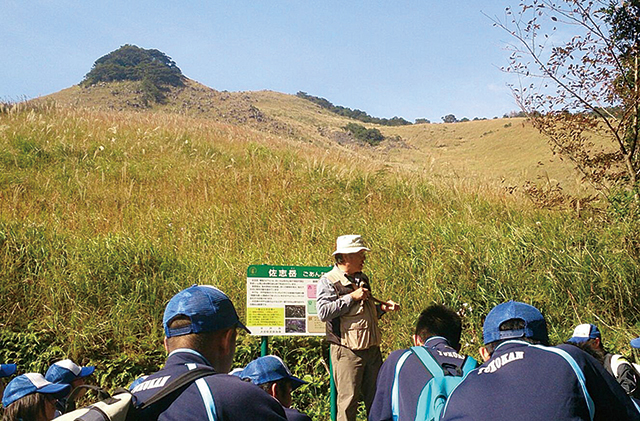
Mt. Sashidake
It has a round lava dome of pyroxene andesite, and the green fields on the eastern side are maintained by field burning and is the site to easily observe invaluable plants including Allium virgunculae, Caryopteris incana and Saussurea japonica.
Obae Lighthouse (Cape Obaebana)

Obae Lighthouse (Cape Obaebana)
The cape is at the northernmost tip of Ikitsuki-jima Island and is a famous scenic spot to see the mountains of the Ikitsuki-jima and Hirado-jima Islands to Goto Islands, Iki Island, and all the way to Tsushima Island at times. The Obae Lighthouse has an observatory, which is rare in Japan.
Kawachi Pass

Kawachi Pass
The mountain overlooks a basaltic plateau of lava that constitutes large fields of Japanese pampas grass and the Themeda triandra var. japonica, which are maintained by burning. Visitors can admire a bird's-eye view of the Genkai Sea and Kita-Kujuku-Shima Islands, making it a perfect driving route adjacent to the Hirado downtown.
Nagushiyama Park

Nagushiyama Park
The park affords a commanding view of the Kita-Kujuku-Shima Islands and is famed for the display of nearly 100,000 Rhododendron Kurume and Rhododendron pulchrum flowers, which is a tourist attraction on the weekends during the flowering season in April and May and served by a shuttle bus.
Kujuku Shima Islands Observatories

Kujuku Shima Islands Observatories
Boasting the highest density of islands in Japan, the Kujuku Shima Islands represent the landscape of Saikai National Park. Due to the islands' topography and geological features, the islands are divided into north and south, and each observatory offers scenes of interesting geographical features.
Kashimae

Kashimae
Kashimae is a center to visit the Minami-Kujuku-Shima Islands. There is the Kujuku Shima Pearl Resort, which includes a visitor center, aquarium and stores. Kashimae is also a base for sightseeing boats and kayaks. Mucuna sempervirens can be seen in Nagao Peninsula Park.
Goto Islands Area
Taka-hama Swimming Beach
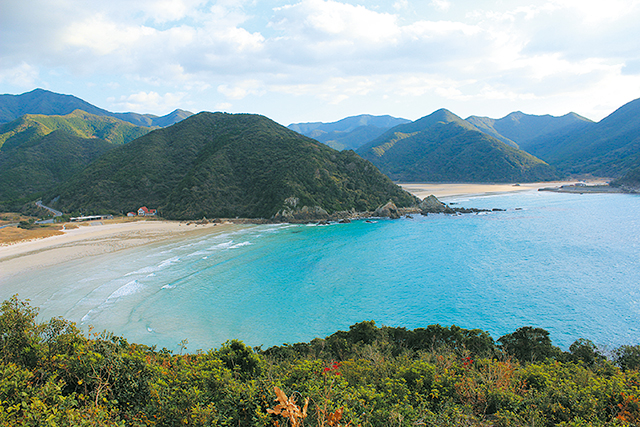
Taka-hama Swimming Beach
Having been selected one of the best 100 shores of Japan and the top 100 beaches of Japan, the beautiful white sandy beach next to the splendor of the blue ocean is also home to a natural population of Crinum asiaticum var. japonicum and Hibiscus makinoi in the rear.
Osezaki Cliffs

Osezaki Cliffs
The cliffs, eroded by the rough waves of the East China Sea, are 100 to 150 m high and continue for a length of 15 km. The Osezaki Lighthouse at the top of the cliffs was completed in 1879. After reconstruction, it serves today as an important signpost for navigation.
Mt. Nanatsudake
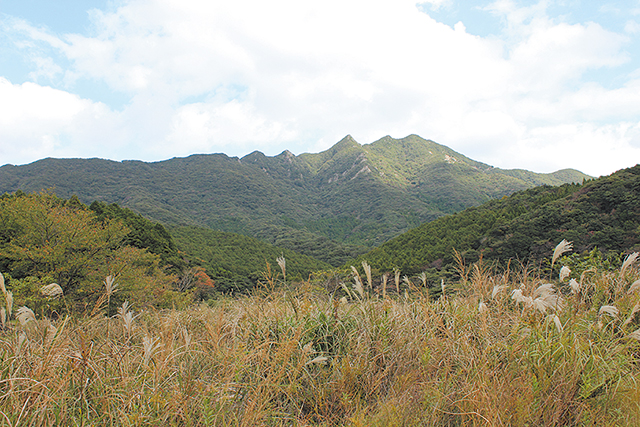
Mt. Nanatsudake
Standing at 431 m above sea level, this beautiful mountain has a series of seven rocky peaks in a saw-like form and was chosen as one of the 100 top mountains in the Kyushu region. The rocky area at the peak and partway up its slope affords fantastic views of the clams of Tamanoura Bay.
Abunse Lava Coast
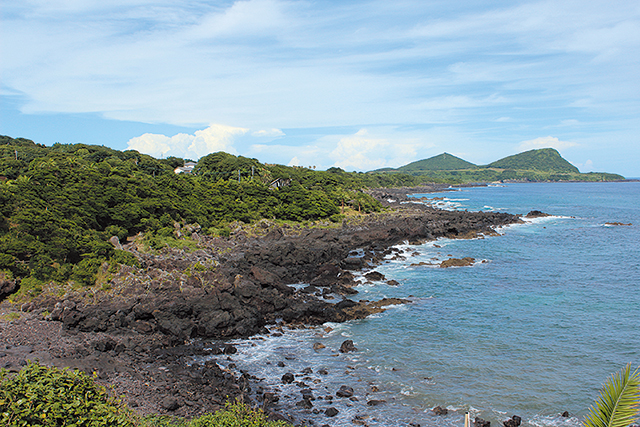
Abunse Lava Coast
The complex 7 km long coastline was formed after the lava flows poured into the sea from the eruption of Mt. Onidake. Visitors can admire the breathtaking view surrounded by colonies of subtropical plants growing in the warm thermal zone.
Mt. Onidake
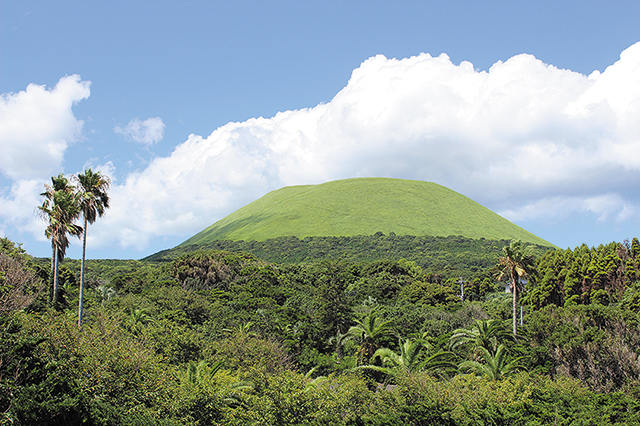
Mt. Onidake
The mountain (315 m above sea level) is a cinder-cone volcano, which was formed as a result of the eructation of a basaltic scoria cone. The volcano features a relatively large crater compared to the base area of volcanic body and a commanding view of the Fukue downtown area and the islands of the Goto Islands .
Former Gorin Church

Former Gorin Church
Returned to the Catholic Church, this is the largest wooden church in Goto Islands. A World Heritage candidate.
Wakamatsu Seto Strait
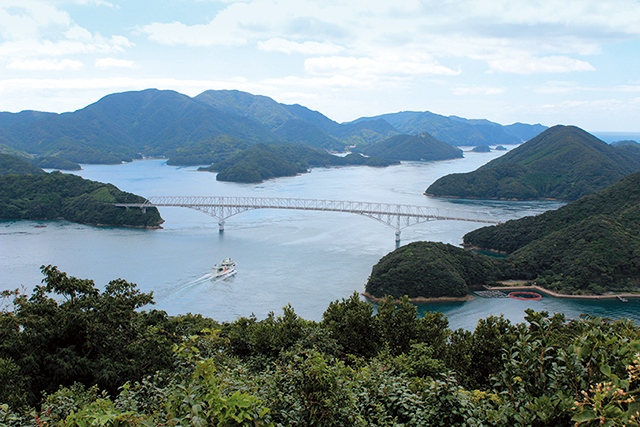
Wakamatsu Seto Strait
Situated between Nakadori-jima and Wakamatsu-jima Islands, the Wakamatsu Seto Strait is noted for its complex, indented coastline extending for 15 km from north to south with 30 islets dotting the waters to form a ria coastline. The Wakamatsu Ohashi Bridge completed in 1991 is a 522 m long truss bridge.
Mt. Bandake
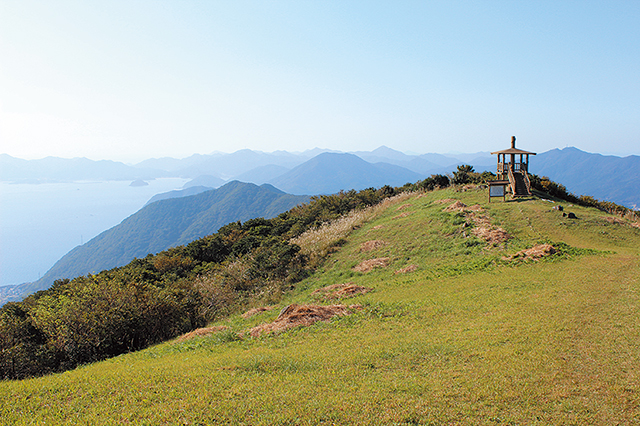
Mt. Bandake
Standing at 442 m above sea level, it is the tallest mountain on Kamigoto. The name came from the watchtower that long ago monitored the passing of foreign boats. It affords fantastic views of the Goto nada open sea to the east and the East China Sea to the west, as well as Hirado-jima Island on clear days.
Hamaguri-hama Swimming Beach
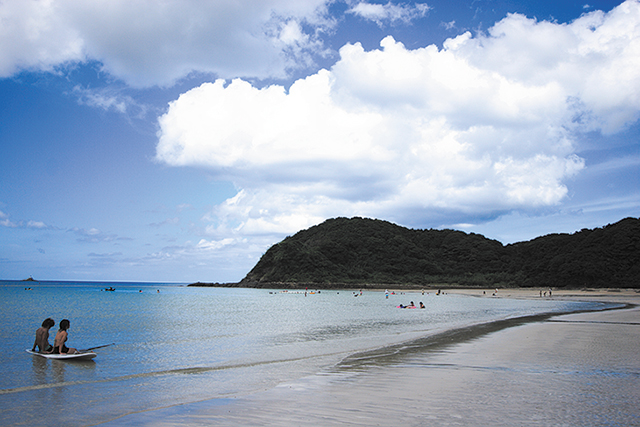
Hamaguri-hama Swimming Beach
This 500 m long shoaling beach has white sand adjacent to green pine forests. Having been chosen as one of the best 88 beaches and the top 100 beaches in Japan, it boasts excellent water quality, safety, and accessibility.
Former Nokubi Church

Former Nokubi Church
A Catholic church on currently uninhabited Nozaki Island. A World Heritage candidate.
Fukue Marine Park
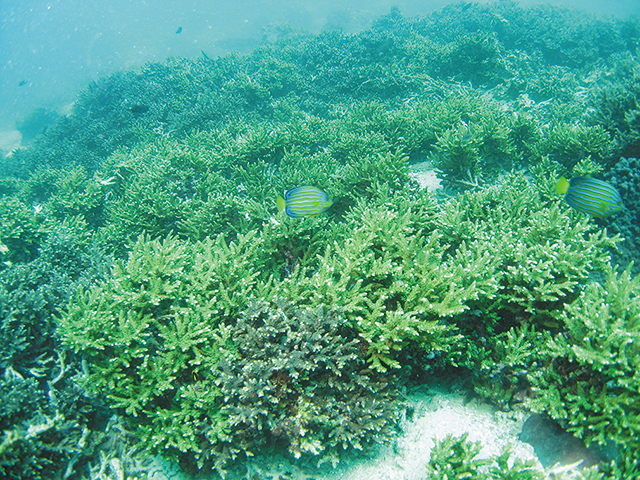
Fukue Marine Park
The periphery of the marine park zone on the Goto Islands is home to well-developed colonies of corals such as the Acropora spp. Visitors can enjoy exploring the undersea world from a glass-bottom boat and by scuba diving.
Wildlife & Plants
Lilium speciosum

Lilium speciosum
A lily with a beautiful dappled pattern. Introduced to Europe by Siebold. The original species of Casablanca.
Japanese Horseshoe Crab (Tachypleus tridentatus)

Japanese Horseshoe Crab (Tachypleus tridentatus)
Breeds in the area between the Seto Inland Sea and the tidal flats at the river mouth in the northwest of Kyushu. Rapidly disappearing, to the extent that there are currently only two families and four species left in the world. Referred to as a living fossil.
Accipiter soloensis
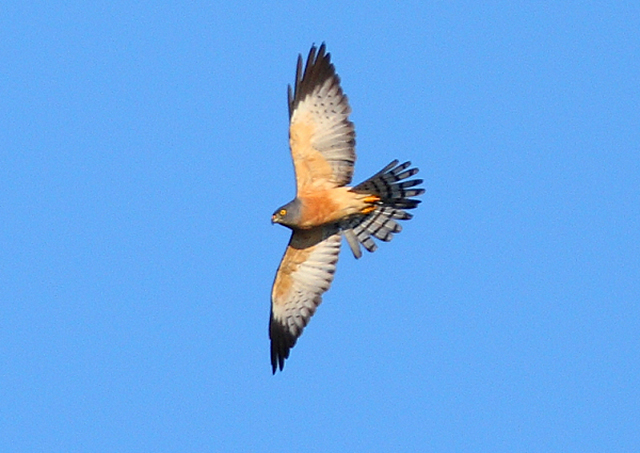
Accipiter soloensis
Breeding on the Korean Peninsula, the hundreds of thousands of the birds pass over the northwest of Kyushu in fall on their way to Southeast Asia.
Hachikuma (Pernis ptilorhyncus)
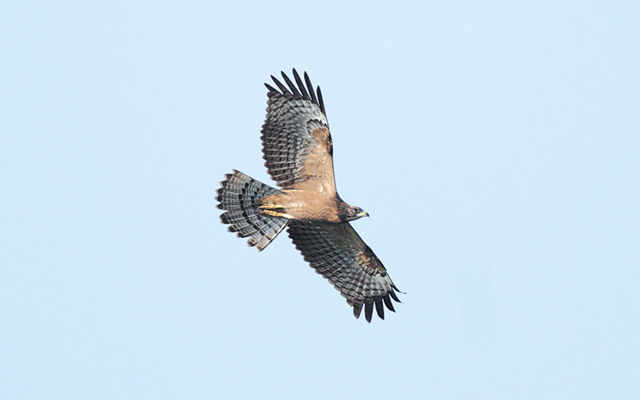
Hachikuma (Pernis ptilorhyncus)
The crested honey buzzard is a family of eagles that flies to the continent of China from northwestern Kyushu in fall, making the Ose Zaki Cape a popular observation point of a migratory flight.
